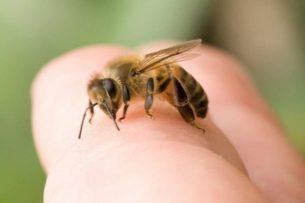Stinging Insect Injury Prevention – Important Information for Employers and Workers
Search the Library

More than two million Americans are allergic to stings from insects like bees, wasps, hornets and yellowjackets. These individuals are at risk of life-threatening reactions, but even those without a history of allergic reactions can experience a severe response.
Employers and employees should take the precautions necessary to avoid worksite insect stings and be aware of sting prevention and response tactics.
Employer Responsibilities
- Evaluate worksites for hazardous bee and insect exposures.
- Establish safety protocol and provide proper personal protective equipment (PPE) and training to prevent insect stings. Training should educate employees on:
- Potential exposures
- Exposure prevention
- Insect identification
- How to respond if stung
Employee Preparedness
Employee preparedness before and while working on a job site is critical. Employees exposed to the risk of insect stings should practice the following safety precautions:
- Avoid use of scented soaps and deodorants and cologne or perfume.
- Wear clean, light-colored clothing that covers as much of the body as possible.
- Wear proper PPE when stinging insects are known to be present (e.g., a hat with netting, an extra layer of clothing or pants taped to boots and sleeves taped to gloves).
- Properly and frequently clear worksites of food, beverages, downed fruit and garbage.
Responding to Insects and Stings
Employees should know when to respond calmly to stinging insects and when to quickly get away.
- Workers with previously known allergic reactions to insect stings should carry EpiPens and wear a form of medical identification that states their allergy.
- If a single insect is present, remain calm and avoid swatting at it.
- If multiple insects attempt to sting at once, or if loud buzzing reveals a disturbed nest, immediately run to escape the environment.
- If stung:
- For those with a history of allergic reactions, utilize an EpiPen and/or call 911 for immediate medical assistance.
- Look for the stinger and remove it using a stiff object like your fingernail or a credit card. Do not squeeze the stinger with your fingers or tweezers; this could promote further irritation.
- Wash the affected area with soap and water.
- Apply ice and/or anti-itch cream to reduce swelling and itching.
- Take antihistamine to reduce the effects of the sting.
For a complete guide to stinging insect avoidance and response, please download our Stinging Insect Injury Prevention handout.
Share this resource:
URL coppied to clipboard.
Or send it directly to someone via our email form:
